#rubin observatory
Explore tagged Tumblr posts
Text
youtube
This is what I’ve been working on for almost 10 years! And what inspired my custom Lego designs! It’s so cool (and also kinda weird) to finally have it at the observatory!
#Vera C. Rubin Observatory#Rubin Observatory#LSST Camera#this has been quite the project#lots of changes coming now#Youtube
4 notes
·
View notes
Text
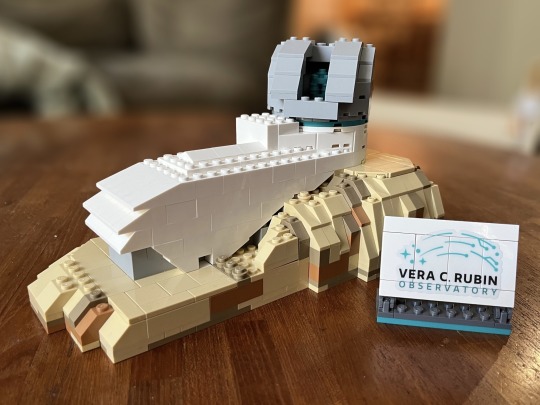
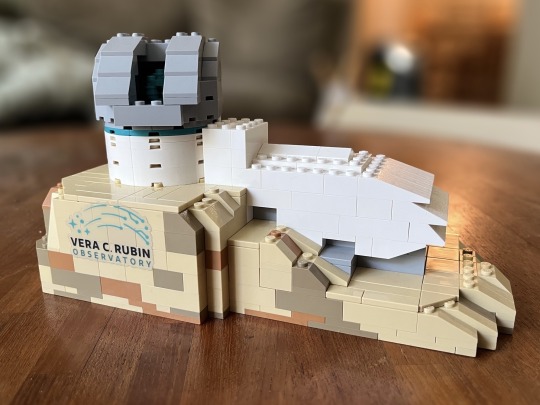

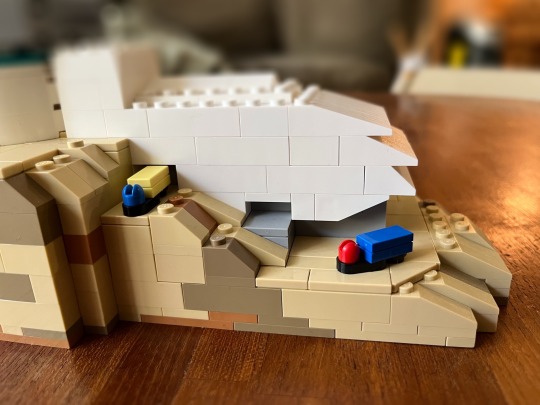
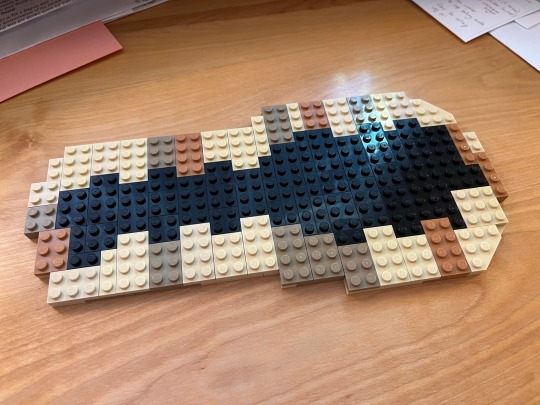

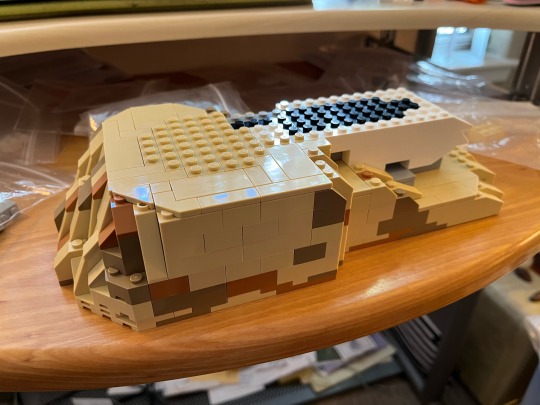
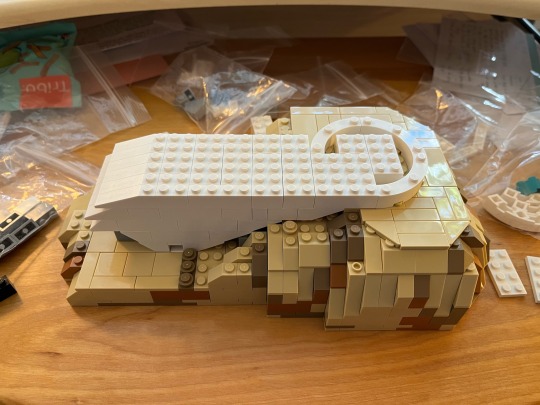
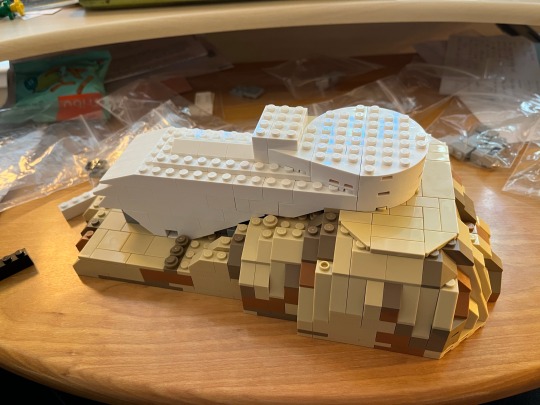
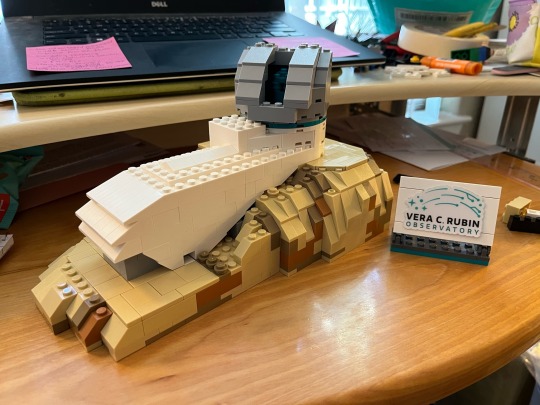
My Lego model of the Vera C. Rubin Observatory is complete! It has a spinning dome (and some fun little accessories) and I am very proud. You can check out @rubin_observatory on Instagram if you want to see photos of the real thing.
I designed this during my last couple trips to the observatory. I planned to take more progress shots but I had absolutely zero chill about assembling it once I had all the pieces. This thing is almost 2 pounds of solid brick and amazingly sturdy.
2 notes
·
View notes
Text
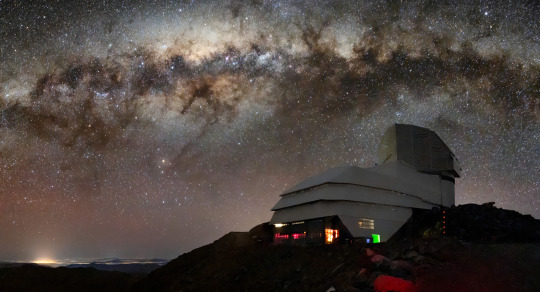
Beautiful Objects
Vera C. Rubin Observatory
An astronomical observatory under construction on top of Cerro Pachón, a mountain in Northern Chile. Rubin Observatory will conduct a 10-year survey of the Southern Hemisphere sky with the goal of answering some of astronomers' biggest questions about the Universe.
Images will be recorded by a 3.2-gigapixel CCD imaging camera, the largest digital camera ever constructed. First light is expected on January 2025.
source: https://rubinobservatory.org/
0 notes
Text
Vera C. Rubin Observatory detects its first asteroid
The detection of asteroids is an essential aspect of planetary defense and understanding the potential risks they pose to Earth. Astronomers use various methods to detect and track asteroids. Astronomers use telescopes on Earth to scan the night sky for moving objects. These telescopes capture images of celestial bodies, and by comparing multiple images taken over time, they can identify…
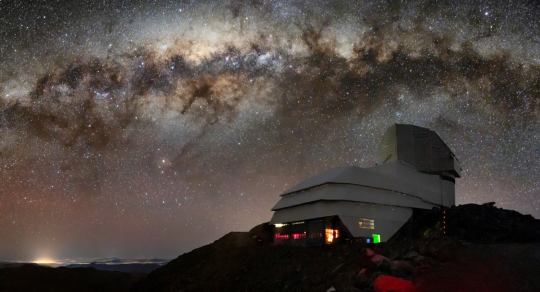
View On WordPress
0 notes
Text
Attention-Worthy Links for December 15th, 2024
#AI#eGridGPT#99.95%#climate#intermittent#real-time#decision-making#Antimatter#Annihilation#propulsion#Deep-space#encryption#CALEA#backdoor#phones#spyware#asteroids#decameter#Rubin#Observatory#planetary#defense
0 notes
Text
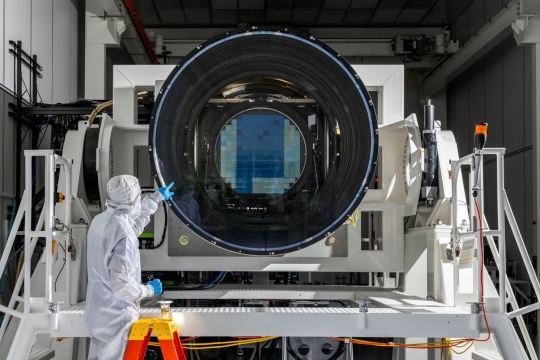
The camera on the Vera C. Rubin Observatory, seen during final stages of completion at SLAC National Accelerator Laboratory in Palo Alto, contains 189 individual sensors and will take photos at 3.2 gigapixels—the largest digital camera ever built.
Is There A 9th Planet Out There? We May Soon Find Out.
Starting in 2025 The Vera C. Rubin Observatory Will Increase the Number of Known Objects Circling the Sun by Roughly Tenfold, Spotting New Comets, Exotic Asteroids From Other Stars, and Perhaps Even the Elusive Planet Nine.
— By Robin George Andrews | Photographs By Christie Hemm Klok | January 09, 2024
Our solar system is home to wondrous worlds, mysterious moons, astounding asteroids, and curious comets. But despite myriad telescope surveys of the night sky, most of our celestial neighborhood remains unseen and unknown.
That’s about to change. Thanks to a revolutionary new telescope, huge swaths of the undiscovered solar system will finally come into view. The Vera C. Rubin Observatory (VRO), currently under construction atop the Cerro Pachón ridge in Chile, 8,700 feet up, is not merely going to advance the field of astronomy—it’s going to revolutionize it. A marvel of engineering, software, and scientific ingenuity, this machine has one overarching goal: to document the entire night sky.
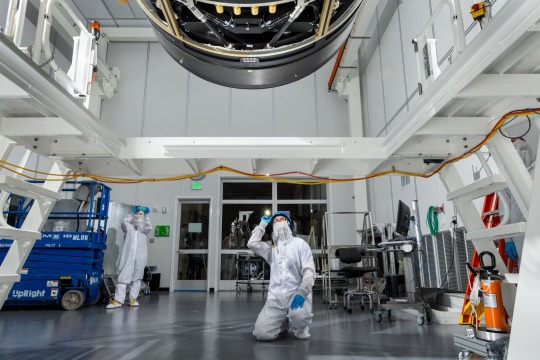
Lead Engineer, Travis Lange, inspects the front of the VRO camera lens with a high powered flashlight, looking for dust. The heart of the new observatory, this advanced camera will image the entire Southern Hemisphere sky many times over.
This includes distant objects, from convulsing stars to cosmic explosions, but also the countless objects in the solar system that have eluded skygazers. “It’s going to be a quite complete catalogue of everything in the solar system out to and beyond Neptune,” says Mario Jurić, an astronomer at the University of Washington working with VRO.
The asteroid tally will almost immediately skyrocket. The first asteroid was discovered in 1801. Two centuries later, a million were known. VRO will double that in three to six months.
The observatory may even find the hypothetical Planet Nine, a large world that some astronomers believe is hiding at the solar system’s peripheries. “Probably within the first year we’re going to see if there’s something there or not,” says Pedro Bernardinelli, an astronomer at the University of Washington.
And VRO is set to spot dozens of interstellar objects—visiting entities that have been ejected from other star systems. With these exotic shards of space rock, “we can literally start to figure out what other planetary systems look like,” says Juríc.
Over the course of its ten-year survey, set to commence in 2025, VRO will give astronomers a new encyclopedia of the solar system. “And then we get to understand what that’s all telling us,” says Juríc—about the very origins and evolution of our galactic cradle.
“I think it’s going to rewrite the history books,” says Meg Schwamb, an astronomer at Queen’s University Belfast working with VRO.
Chile’s Almighty Eye
The Vera C. Rubin Observatory, jointly funded by the National Science Foundation and the Department of Energy, is named after the famed astronomer who revealed the existence of dark matter—an as-yet-undetected substance binding stars and galaxies together. Designed to address a multitude of cosmic queries, the cutting-edge observatory is a beast of a scientific instrument.
“Everything is big about Rubin,” says Sandrine Thomas, the deputy director for VRO construction. “The telescope is superfast. The camera is huge and very precise. The detector is also extremely big. The number of pixels is gigantic.”
Most observatories have either a wide field of view, meaning they can see more of the sky at once, or a huge mirror, which allows more light to be gathered, revealing fainter and more distant objects. But thanks to its paradigm-shifting engineering, VRO has both. It will peruse the entire night sky viewable from the Southern Hemisphere countless times during its decade-long survey, seeing almost everything, almost everywhere.
“This is a once-in-a-generation leap,” says Bernardinelli.
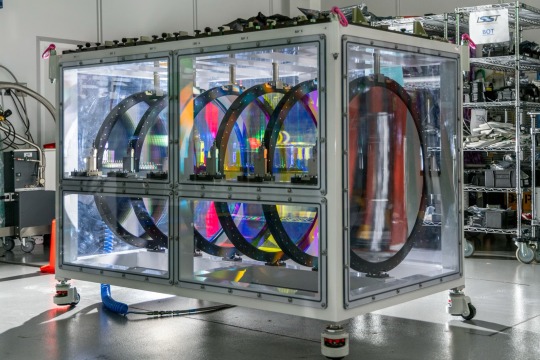
A large airtight box holds filters for the VRO camera. Nitrogen continuously pumped into the chamber is dryer than natural air and prevents the glass from warping.
Beyond The Veil
Many of the worlds VRO will spot will be in the asteroid belt. “This is the mortar left over from planet formation,” says Schwamb.
The observatory will undoubtedly find many modestly sized asteroids orbiting close to Earth, the sort that have so far eluded asteroid-hunting surveys. That means VRO could find future Earth-impactors before they find us, so that we can attempt to avoid a catastrophic asteroid impact.
Other asteroids may be found drifting inside Earth’s orbit, perhaps as part of a hypothesized reservoir of space rocks swimming about close to Venus. And while VRO will populate the inner solar system, it is also set to reveal the architecture of the outer solar system for the first time.
As well as increasing the tally of moons belonging to Jupiter and Saturn (the famously ringed planet currently has 146 confirmed moons), VRO will be able to spy comets starting to effervesce further out than ever before. Apart from a few highly volatile elephantine comets, most of these far-ranging ice balls are not spotted until they approach the sunlit confines of the inner solar system, where they heat up and shed a trail of icy debris.
VRO may permit astronomers to fulfil a long-time dream: find a comet long before it plunges sunward for the first time in its existence. This would represent a pristine, unaltered record from the dawn of the solar system. With enough advance notice, astronomers could even chase it down before it starts cooking. “We’ll be able to send a spacecraft to get up close and personal,” says Schwamb.
Comets come from two places. The Oort Cloud, a hypothesized shell of icy worlds at an unfathomable distance from the sun, has never been directly seen—and VRO won’t change that. But the Kuiper Belt, a torus-shaped ring of gelid objects, including the dwarf planet Pluto, will have its portrait taken by VRO in considerable detail.
Currently, only a few thousand Kuiper Belt objects, or KBOs, have been identified. VRO is expected to find at least that many. The observations will reveal the true structure and contents of the icy belt, and it could also solve a great mystery about the solar system: “How many planets do we have?” says Schwamb.
Over the last decade, some astronomers have suggested that the peculiar orbits of objects at the solar system’s fringes means a Neptune-size planet is lurking somewhere out there, far beyond Pluto. Existing telescopes are highly unlikely to spot such a distant world—but VRO should find Planet Nine, if it exists.
“Imagine if, two years from now, we could say that there’s a new planet in the solar system,” says Bernardinelli. “That’s kind of exciting.”
Visitors From Beyond The Solar System
In 2017 astronomers detected something amazing: the very first interstellar object, 1I/ʻOumuamua, a thin asteroid or comet that had escaped the gravitational grip of another star. It moved into and then out of the solar system at remarkable speeds, giving scientists only a few days to study it. Then, in 2019 a second planetary tourist was found, the comet 2I/Borisov.
With just two known, scientists have very little information about the nature of such interstellar objects. They remind Schwamb of the corners of old maps that no seafarers had yet chronicled: “There be dragons,” she says.
Fortunately, VRO is projected to find a handful of new interstellar objects every year. These envoys from different star systems contain matter that was forged in stellar and planetary environments different from our solar system.
“They’re a sample of the planet formation process at stars all across the galaxy,” says Michele Bannister, an astronomer at the University in Canterbury in New Zealand.
The VRO’s sophisticated eye allows it to see objects in a range of colors, which means scientists can not only spot interstellar objects at considerable distances, but also get an idea of what they are made of. And while the VRO plays the role of the reconnaissance scout, scientists can use other telescopes with a smaller fields of view but better zoom-in capabilities to get closer looks at these alien time capsules.
“If we found one of these things as it was still approaching, and we had a year to observe it, that would be fantastic,” says Juríc.
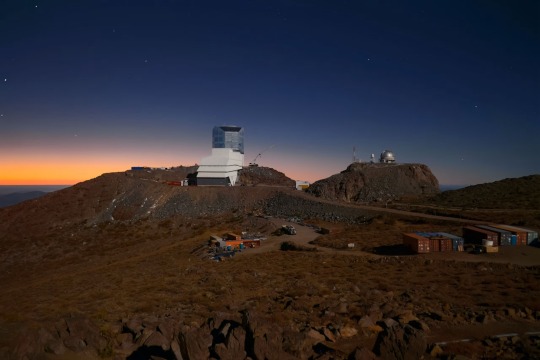
The Vera C. Rubin Observatory sits beneath a twilight sky at its site in Chile. Rubin is being built to conduct the Legacy Survey of Space and Time (LSST). This survey will observe the entire visible southern sky every few nights over the course of a decade, capturing about 1,000 images every night. Rubinobs/NSF/Aura
Everlasting Change
Like all ground-based observatories, VRO will be hampered by the proliferation of low-flying, highly reflective satellites, particularly those belonging to SpaceX’s internet-providing Starlink megaconstellation. The roughly 4,500 Starlinks currently in orbit are already adding bright, white streaks to many astronomical images. SpaceX plans to launch tens of thousands more satellites in the future, which could mean 30 percent of all VRO images would be graffitied.
At present, there is no clear solution to this problem. “We will have to deal with it because we don’t have a choice,” says Bernardinelli. But while megaconstellation light pollution will mar some of VRO’s views, it won’t stop the observatory from being the discovery engine that astronomers have long dreamed about.
“The detail that will be revealed, this beautiful complexity that’s gonna show up—that will fine tune our ability to go from broad-brush histories of the solar system” to something more measured and precise, says Bannister. Currently, as scientists study the outer solar system’s structure, it’s like “seeing faces in clouds.” The VRO will mean that “we have Michelangelo’s David.”
#Telescope 🔭 | Planets 🪐 🪐 | Planetary Moons 🌓 🌒 🌑 | Asteriods ☄️ | Solar System | Space#9th Planet#Vera C. Rubin Observatory
0 notes
Text
Caution: Universe Work Ahead 🚧
We only have one universe. That’s usually plenty – it’s pretty big after all! But there are some things scientists can’t do with our real universe that they can do if they build new ones using computers.
The universes they create aren’t real, but they’re important tools to help us understand the cosmos. Two teams of scientists recently created a couple of these simulations to help us learn how our Nancy Grace Roman Space Telescope sets out to unveil the universe’s distant past and give us a glimpse of possible futures.
Caution: you are now entering a cosmic construction zone (no hard hat required)!

This simulated Roman deep field image, containing hundreds of thousands of galaxies, represents just 1.3 percent of the synthetic survey, which is itself just one percent of Roman's planned survey. The full simulation is available here. The galaxies are color coded – redder ones are farther away, and whiter ones are nearer. The simulation showcases Roman’s power to conduct large, deep surveys and study the universe statistically in ways that aren’t possible with current telescopes.
One Roman simulation is helping scientists plan how to study cosmic evolution by teaming up with other telescopes, like the Vera C. Rubin Observatory. It’s based on galaxy and dark matter models combined with real data from other telescopes. It envisions a big patch of the sky Roman will survey when it launches by 2027. Scientists are exploring the simulation to make observation plans so Roman will help us learn as much as possible. It’s a sneak peek at what we could figure out about how and why our universe has changed dramatically across cosmic epochs.
youtube
This video begins by showing the most distant galaxies in the simulated deep field image in red. As it zooms out, layers of nearer (yellow and white) galaxies are added to the frame. By studying different cosmic epochs, Roman will be able to trace the universe's expansion history, study how galaxies developed over time, and much more.
As part of the real future survey, Roman will study the structure and evolution of the universe, map dark matter – an invisible substance detectable only by seeing its gravitational effects on visible matter – and discern between the leading theories that attempt to explain why the expansion of the universe is speeding up. It will do it by traveling back in time…well, sort of.
Seeing into the past
Looking way out into space is kind of like using a time machine. That’s because the light emitted by distant galaxies takes longer to reach us than light from ones that are nearby. When we look at farther galaxies, we see the universe as it was when their light was emitted. That can help us see billions of years into the past. Comparing what the universe was like at different ages will help astronomers piece together the way it has transformed over time.

This animation shows the type of science that astronomers will be able to do with future Roman deep field observations. The gravity of intervening galaxy clusters and dark matter can lens the light from farther objects, warping their appearance as shown in the animation. By studying the distorted light, astronomers can study elusive dark matter, which can only be measured indirectly through its gravitational effects on visible matter. As a bonus, this lensing also makes it easier to see the most distant galaxies whose light they magnify.
The simulation demonstrates how Roman will see even farther back in time thanks to natural magnifying glasses in space. Huge clusters of galaxies are so massive that they warp the fabric of space-time, kind of like how a bowling ball creates a well when placed on a trampoline. When light from more distant galaxies passes close to a galaxy cluster, it follows the curved space-time and bends around the cluster. That lenses the light, producing brighter, distorted images of the farther galaxies.
Roman will be sensitive enough to use this phenomenon to see how even small masses, like clumps of dark matter, warp the appearance of distant galaxies. That will help narrow down the candidates for what dark matter could be made of.

In this simulated view of the deep cosmos, each dot represents a galaxy. The three small squares show Hubble's field of view, and each reveals a different region of the synthetic universe. Roman will be able to quickly survey an area as large as the whole zoomed-out image, which will give us a glimpse of the universe’s largest structures.
Constructing the cosmos over billions of years
A separate simulation shows what Roman might expect to see across more than 10 billion years of cosmic history. It’s based on a galaxy formation model that represents our current understanding of how the universe works. That means that Roman can put that model to the test when it delivers real observations, since astronomers can compare what they expected to see with what’s really out there.

In this side view of the simulated universe, each dot represents a galaxy whose size and brightness corresponds to its mass. Slices from different epochs illustrate how Roman will be able to view the universe across cosmic history. Astronomers will use such observations to piece together how cosmic evolution led to the web-like structure we see today.
This simulation also shows how Roman will help us learn how extremely large structures in the cosmos were constructed over time. For hundreds of millions of years after the universe was born, it was filled with a sea of charged particles that was almost completely uniform. Today, billions of years later, there are galaxies and galaxy clusters glowing in clumps along invisible threads of dark matter that extend hundreds of millions of light-years. Vast “cosmic voids” are found in between all the shining strands.
Astronomers have connected some of the dots between the universe’s early days and today, but it’s been difficult to see the big picture. Roman’s broad view of space will help us quickly see the universe’s web-like structure for the first time. That’s something that would take Hubble or Webb decades to do! Scientists will also use Roman to view different slices of the universe and piece together all the snapshots in time. We’re looking forward to learning how the cosmos grew and developed to its present state and finding clues about its ultimate fate.

This image, containing millions of simulated galaxies strewn across space and time, shows the areas Hubble (white) and Roman (yellow) can capture in a single snapshot. It would take Hubble about 85 years to map the entire region shown in the image at the same depth, but Roman could do it in just 63 days. Roman’s larger view and fast survey speeds will unveil the evolving universe in ways that have never been possible before.
Roman will explore the cosmos as no telescope ever has before, combining a panoramic view of the universe with a vantage point in space. Each picture it sends back will let us see areas that are at least a hundred times larger than our Hubble or James Webb space telescopes can see at one time. Astronomers will study them to learn more about how galaxies were constructed, dark matter, and much more.
The simulations are much more than just pretty pictures – they’re important stepping stones that forecast what we can expect to see with Roman. We’ve never had a view like Roman’s before, so having a preview helps make sure we can make the most of this incredible mission when it launches.
Learn more about the exciting science this mission will investigate on Twitter and Facebook.
Make sure to follow us on Tumblr for your regular dose of space!
#NASA#astronomy#telescope#Roman Space Telescope#dark matter#galaxies#cosmology#astrophysics#stars#galaxy#Hubble#Webb#spaceblr
2K notes
·
View notes
Text
DOES DARK MATTER REALLY EXIST??
Blog#473
Wednesday, January 22nd, 2025.
Welcome back,
In April 2023, scientists from the Atacama Cosmology Telescope (ACT) collaboration created a map of the universe showing the detailed distribution of dark matter, a mysterious form of matter that makes up around 85% of the total matter in the universe.
While creating any accurate map of matter distribution across the cosmos is an impressive feat, it is particularly extraordinary for dark matter, which does not interact with light and thus cannot be seen directly with telescopes or other instruments.

So, if dark matter is effectively "invisible," how can scientists map it? And how do we even know dark matter exists? Put simply, to detect dark matter, astronomers look at its indirect effects on gravity and how it impacts other objects with mass and light.
All galaxies are believed to be wrapped in an invisible halo of dark matter, and this envelope is vitally important; galaxies are rotating so rapidly, that without dark matter, they would have been torn apart long ago if they were held together only by the influence of their stars, gas, dust and planets, according to the European Organization for Nuclear Research (CERN).

As such, this mysterious substance must have played an important role in the evolution of the universe.
Everything we see around us on a day-to-day basis is made up of "ordinary" matter, known as baryonic matter, meaning it's composed of baryons (such as protons and neutrons). According to the Swinburne Centre for Astrophysics and Supercomputing, cosmic objects made of baryonic matter include clouds of cold gas, planets, comets and asteroids, stars, neutron stars and even black holes.

Most of these cosmic objects (as well as Earthbound objects, such as tables, cars and cats) can be seen because baryons interact with the electromagnetic force, one of the universe's four fundamental forces. When electromagnetic radiation, including visible light, falls on baryonic objects, they absorb photons and reemit them, or simply reflect them, so these objects can be seen. Even dark clouds of cosmic gas that do not shine brightly absorb photons of light at certain wavelengths, so they can be seen by their interaction with light.

Scientists know that dark matter is distinct from ordinary baryonic matter because whatever particles dark matter comprises either don't reflect, absorb or emit electromagnetic radiation or if they do interact with light, they do so incredibly weakly. This means dark matter can't be seen in traditional ways that rely on electromagnetic radiation.
Although dark matter does not interact strongly via electromagnetism, it does interact with another fundamental force: gravity. It is through the interaction with gravity that astronomers were first able to discover dark matter and, later, accurately map it.

The first hints of dark matter were observed in 1933 when California Institute of Technology astronomer Fritz Zwicky used the Mount Wilson Observatory to measure the visible mass of the Coma Cluster of galaxies. Zwicky, later dubbed "the father of dark matter," found that single galaxies in this cluster were moving too fast for the cluster to remain together based on the gravity of the visible matter alone.
Zwicky suggested that an as-yet-unobserved type of mass — "dunkle Materie," or "dark matter" — might explain this disparity, but the concept wouldn't be widely accepted for decades to come, until after his death in 1974.

While studying the rotational dynamics of galaxies, Carnegie Institution astronomer Vera Rubin became the next scientist to infer the presence of dark matter with observations that helped to cement it as an accepted element of the universe. Rubin saw that the stars at the edge of spiral galaxies far from their dense centers were moving as fast as stars closer to the galactic heart, according to the American Museum of Natural History.
Originally published on https://www.space.com
COMING UP!!
(Saturday, January 25th, 2025)
"WHAT ARE DARK STARS??"
#astronomy#outer space#alternate universe#astrophysics#universe#spacecraft#white universe#space#parallel universe#astrophotography
88 notes
·
View notes
Text
Happy International Women's Day!
Women are underrepresented in the fields of astronomy and physics. According to the International Astronomical Union (IAU), between 20-30% of astronomers are women. While many well-known astronomers are men, there have been numerous female astronomers in history who have made incredible discoveries, but who history has forgotten. Today we'll go over some of those women and their accomplishments.
Annie Jump Cannon (1863-1941)

Annie Jump Cannon is the woman responsible for our current stellar classification system, which organizes stars based on spectral types and temperature.
She worked at Harvard Observatory as a computer, working on the Henry Draper Catalogue, which attempted to map and classify all the stars in the sky. She was regarded as the best out of the computers, being able to accurately classify the stars incredibly quickly, up to three stars per minute.
Cannon's classification system (O, B, A, F, G, K, M) is still in use today, and separates stars into one of these spectral groups based on different characteristics of their absorption lines.
Henrietta Swan Leavitt (1868-1921)

Henrietta Leavitt is most well known for her discovery of the period-luminosity relationship of Cepheid variable stars.
Henrietta Leavitt was also a computer at Harvard Observatory in the late 1800s and early 1900s, working on cataloguing positions and luminosities of stars. In 1912, Edward Pickering published a paper with Leavitt's observations, which contained a relationship between the brightness of the Cepheid and the logarithm of the period of it.
This discovery, and the ensuing P-L relationship (sometimes known as Leavitt's Law), allowed astronomers to determine the distance to further objects. Because Cepheids are visible in nearby galaxies, astronomers were able to determine that these galaxies (or nebulae, as they were called then), were actually much further away than previously thought, leading to our current understanding of the universe and galaxies outside our own.
Cecilia Payne-Gaposchkin (1900-1979)

Cecilia Payne-Gaposchkin was the first astronomer to conclude that stars are primarily made of hydrogen and helium.
At the time her thesis was proposed in 1925, it was thought that the sun had a similar elemental composition as the Earth. Payne-Gaposchkin, however, had studied quantum physics, and recognized that the differences in absorption lines between different stars was due to ionization and temperature differences, not elemental differences, and that stars were primarily made of hydrogen and helium, with heavier elements making up less than two percent of stars' masses.
Her theory was met with resistance, and she even put a disclaimer in her thesis, saying the results were "almost certainly not real" in order to protect her career. She was, however, proven right within a few years, and her discovery shaped our knowledge of the composition of the universe.
Vera C. Rubin (1928-2016)


Vera Rubin is most well known for studying the rotation curves of galaxies, and finding a discrepancy that didn't align with the current understanding of physics. This discovery was used as evidence of dark matter, as proposed by Zwicky in the 1930s.
Rubin discovered that spiral galaxies didn't rotate as expected. When looking at our solar system, the outer planets orbit slower due to the inverse square nature of gravity. However, this decaying rotation curve wasn't what was found in spiral galaxies - rather, the outer edges of the galaxies were rotating at about the same speed as the inner areas.
According to Rubin's calculations, galaxies contained 5-10 times more mass than what was accounted for with visible matter. This supported the dark matter theory, and resulted in the current "anatomy" of galaxies, with the visible matter surrounded by a dark matter halo.
Jocelyn Bell (1943-present)


Jocelyn Bell discovered pulsars among a sea of data as a graduate student at Cambridge.
Pulsars (shortened from pulsating radio stars) are rapidly rotating neutron stars, which emit bursts of radiation at extremely short and consistent time intervals.
Bell discovered these, and published the findings in a paper with her thesis supervisor, Antony Hewish. in 1974, Hewish received the Nobel Prize in physics for this discovery, while Bell was omitted, due to her status as both a woman and a graduate student. In 2018, she was awarded the Breakthrough prize in Fundamental Physics for her discovery, and used the three million dollar reward to help minorities in physics.
#just jupiter#aspaceinthecosmos#wow i actually posted?!#space#nasa#international womens day#women in stem#astronomy#physics#astrophysics#science#outer space#jocelyn bell#vera c rubin#cecilia payne#women in science#women's history#henrietta leavitt#annie jump cannon
48 notes
·
View notes
Text
The federal webpage for an observatory named for the late astronomer Vera Rubin was edited to omit any recognition of the fact that science remains a male-dominated field or that the observatory was working to be more inclusive.
We have got to share our histories because together it is ours.
7 notes
·
View notes
Text

The Vera C. Rubin Observatory will detect millions of exploding stars
Measuring distances across the universe is much more challenging than measuring distances on Earth. Is a brighter star closer to Earth than another, or is it just emitting more light? To make confident distance measurements, scientists rely on objects that emit a known amount of light, like Type Ia supernovae.
These spectacular explosions, among the brightest to ever be recorded in the night sky, result from the violent deaths of white dwarf stars and provide scientists with a reliable cosmic yardstick. Their brightness and color, combined with information about their host galaxies, allow scientists to calculate their distance and how much the universe expanded while their light made its journey to us. With enough Type Ia supernovae observations, scientists can measure the universe's expansion rate and whether it changes over time.
Although we've caught thousands of Type Ia supernovae to date, seeing them once or twice is not enough—there is a goldmine of information in how their fleeting light varies over time. NSF–DOE Vera C. Rubin Observatory will soon begin scanning the southern hemisphere sky every night for ten years, covering the entire hemisphere approximately every few nights. Every time Rubin detects an object changing brightness or position it will send an alert to the science community. With such rapid detection, Rubin will be our most powerful tool yet for spotting Type Ia supernovae before they fade away.
Rubin Observatory is a joint program of NSF NOIRLab and DOE's SLAC National Accelerator Laboratory, which will cooperatively operate Rubin.
Scientists like Anais Möller, a member of the Rubin/LSST Dark Energy Science Collaboration, look forward to Rubin's decade-long Legacy Survey of Space and Time (LSST), during which it's expected to detect millions of Type Ia supernovae.
"The large volume of data from Rubin will give us a sample of all kinds of Type Ia supernovae at a range of distances and in many different types of galaxies," says Möller.
In fact, Rubin will discover many more Type Ia supernovae in the first few months of the LSST than were used in the initial discovery of dark energy—the mysterious force causing the universe to expand faster than expected based on gravitational theory. Current measurements hint that dark energy might change over time, which—if confirmed—could help refine our understanding of the universe's age and evolution. That in turn would impact what we understand about how the universe formed, including how quickly stars and galaxies formed in the early universe.
With a much larger set of Type Ia supernovae from across the universe scientists will be able to refine our existing map of space and time, getting a fuller picture of dark energy's influence.
"The universe expanding is like a rubber band being stretched. If dark energy is not constant, that would be like stretching the rubber band by different amounts at different points," says Möller. "I think in the next decade we will be able to constrain whether dark energy is constant or evolving with cosmic time. Rubin will allow us to do that with Type Ia supernovae."
Every night Rubin Observatory will produce about 20 terabytes of data and generate up to 10 million alerts—no other telescope in history has produced a firehose of data quite like this. It has required scientists to rethink the way they manage rapid alerts and to develop methods and systems to handle the large incoming datasets.
Rubin's deluge of nightly alerts will be managed and made available to scientists through seven community software systems that will ingest and process these alerts before serving them up to scientists around the world. Möller, together with a large collaboration of scientists across expertises, is developing one of these systems, called Fink.
The software systems collect the alerts from Rubin each night, merge Rubin data with other datasets, and using machine-learning, classify them according to their type, such as kilonovae, variable stars, or Type Ia supernovae, among others. Scientists using one of Rubin's community systems, like Fink, will be able to sort the massive dataset of alerts according to selected filters, allowing them to quickly home in on the data that are useful for their research.
"Because of the large volumes of data, we can't do science the same way we did before," says Möller. "Rubin is a generational shift. And our responsibility is developing the methods that will be used by the next generation."
7 notes
·
View notes
Text










I realized I never posted this custom Lego design I made about a year ago. It’s of the LSST Camera (the project I’m working on) installed on one of its integration stands. I had a lot of fun figuring out how to get things to look right and actually move like the real stand. The Camera can actually be removed and disassembled, but the model isn’t quite sturdy enough to do that on the regular (which is sad). If you’re interested you can dig through @slac_lab and @rubin_observatory (on Instagram) for more photos of the real Camera.
3 notes
·
View notes
Text
A new artificial intelligence algorithm programmed to hunt for potentially dangerous near-Earth asteroids has discovered its first space rock. The roughly 600-foot-wide (180 meters) asteroid has received the designation 2022 SF289, and is expected to approach Earth to within 140,000 miles (225,000 kilometers). That distance is shorter than that between our planet and the moon, which are on average, 238,855 miles (384,400 km) apart. This is close enough to define the rock as a Potentially Hazardous Asteroid (PHA), but that doesn't mean it will impact Earth in the foreseeable future. The HelioLinc3D program, which found the asteroid, has been developed to help the Vera C. Rubin Observatory, currently under construction in Northern Chile, conduct its upcoming 10-year survey of the night sky by searching for space rocks in Earth's near vicinity. As such, the algorithm could be vital in giving scientists the heads up about space rocks on a collision course with Earth.
Continue Reading.
63 notes
·
View notes
Text

Oh boy Sedna (she/her and it/its)
I've always liked Sedna the most out of the dwarf planet candidates. I don't know if this is just nostalgia due to the fact that my childhood space encyclopedia specifically used Sedna as an example of a dwarf planet alongside Pluto, complete with a pretty artist's impression - we don't even know that much about Sedna. But perhaps that's the charm! Sedna is a complete enigma - we can't even estimate its mass to the same degree of accuracy as the other dwarf planets because it doesn't have any moons. Not to mention its crazy orbit, we still don't know why it's so eccentric. In fact Sedna's orbit is one of the main hypotheses for the existence of Planet 9, as it and the group of KBOs it gives its name to - the sednoids - have orbits so eccentric and distant that they cannot be explained by the gravitational disturbance of any existing planet. Very interesting stuff.
Sedna's 'lore' of sorts, is quite dependent on the Planet 9 hypothesis proving to be real. It would find Planet 9 in the depths of the Oort Cloud, growing themself by devouring comets en masse. Sedna is sworn to secrecy under the threat of being devoured herself - as Planet 9 is basically in exile and doesn't want the rest of the Solar System to know they're still alive (one form of speculation about planet 9 is that it's either an ice giant or super-earth - not a consensus but both categories can be in the predicted size range for planet 9, in fact it could be both, ie, originally an ice giant but reduced to its rocky core, that would be cool - that was ejected from the main solar system by Jupiter's gravity) - but the weight of the secret is heavy, and Sedna becomes very wary and anxious as a result. Of course, if Planet 9 is not real (we'll know soon enough), then this is all inaccurate...I don't know if I'd get rid of it, considering it's a fun villain idea, but I do like this story to be in line with current knowledge. It depends on what the explanation of the sednoids' orbits turns out to be. Maybe I could bring in Nemesis instead, which is another hypothetical object which could've caused the orbits. Basically, the hypothesis is that another star (Nemesis) passed close by the solar system in early days (or is secretly orbiting the Sun at a distance) and threw the sednoids out of wack. This is much less likely, as a star should have had more effects than just the sednoids' wacky orbit, and the fact that stars are generally much easier to observe...
I don't know :(
Anyway, Sedna is a bit of a nervous wreck, but it tries to pull itself together to do brave things. She's used to being lonely, and is alarmed by lots of noise. She's very practical and doesn't have a lot of patience for niceties.
I love it it's so silly
some articles about planet 9 (there is some new hype now that the Rubin observatory is getting opened)
https://www.astronomy.com/science/new-evidence-builds-case-planet-nine/
https://astrobiology.nasa.gov/news/caltech-researchers-find-evidence-of-a-real-ninth-planet/
next up we'll be going back to Cis-Neptunian space and starting Saturn's moons, with Titan
#art#oc#oc art#cat#cat art#cat oc#artists on tumblr#cartoon#feral oc#feral furry#sedna#dwarf planet sedna#dwarf planet#dwarf planets#dwarf planet candidates#space cats#space#solar system#science#astronomy#astrophysics#planetary science
5 notes
·
View notes
Text

The camera on the Vera C. Rubin Observatory, seen during final stages of completion at SLAC National Accelerator Laboratory in Palo Alto, contains 189 individual sensors and will take photos at 3.2 gigapixels—the largest digital camera ever built.
Is There A 9th Planet Out There? We May Soon Find Out.
Starting in 2025 the Vera C. Rubin Observatory will increase the number of known objects circling the sun by roughly tenfold, spotting new comets, exotic asteroids from other stars, and perhaps even the elusive Planet Nine.
— By Robin George Andrews | Photographs By Christie Hemm Klok | January 9, 2024
Our solar system is home to wondrous worlds, mysterious moons, astounding asteroids, and curious comets. But despite myriad telescope surveys of the night sky, most of our celestial neighborhood remains unseen and unknown.
That’s about to change. Thanks to a revolutionary new telescope, huge swaths of the undiscovered solar system will finally come into view. The Vera C. Rubin Observatory (VRO), currently under construction atop the Cerro Pachón ridge in Chile 🇨🇱, 8,700 feet up, is not merely going to advance the field of astronomy—it’s going to revolutionize it. A marvel of engineering, software, and scientific ingenuity, this machine has one overarching goal: to document the entire night sky.

Lead Engineer, Travis Lange, inspects the front of the VRO camera lens with a high powered flashlight, looking for dust. The heart of the new observatory, this advanced camera will image the entire Southern Hemisphere sky many times over.
This includes distant objects, from convulsing stars to cosmic explosions, but also the countless objects in the solar system that have eluded skygazers. “It’s going to be a quite complete catalogue of everything in the solar system out to and beyond Neptune,” says Mario Jurić, an astronomer at the University of Washington working with VRO.
The asteroid tally will almost immediately skyrocket. The first asteroid was discovered in 1801. Two centuries later, a million were known. VRO will double that in three to six months.
The observatory may even find the hypothetical Planet Nine, a large world that some astronomers believe is hiding at the solar system’s peripheries. “Probably within the first year we’re going to see if there’s something there or not,” says Pedro Bernardinelli, an astronomer at the University of Washington.
And VRO is set to spot dozens of interstellar objects—visiting entities that have been ejected from other star systems. With these exotic shards of space rock, “we can literally start to figure out what other planetary systems look like,” says Juríc.
Over the course of its ten-year survey, set to commence in 2025, VRO will give astronomers a new encyclopedia of the solar system. “And then we get to understand what that’s all telling us,” says Juríc—about the very origins and evolution of our galactic cradle.
“I think it’s going to rewrite the history books,” says Meg Schwamb, an astronomer at Queen’s University Belfast working with VRO.
Chile’s 🇨🇱 Almighty Eye
The Vera C. Rubin Observatory, jointly funded by the National Science Foundation and the Department of Energy, is named after the famed astronomer who revealed the existence of dark matter—an as-yet-undetected substance binding stars and galaxies together. Designed to address a multitude of cosmic queries, the cutting-edge observatory is a beast of a scientific instrument.
“Everything is big about Rubin,” says Sandrine Thomas, the deputy director for VRO construction. “The telescope is superfast. The camera is huge and very precise. The detector is also extremely big. The number of pixels is gigantic.”
Most observatories have either a wide field of view, meaning they can see more of the sky at once, or a huge mirror, which allows more light to be gathered, revealing fainter and more distant objects. But thanks to its paradigm-shifting engineering, VRO has both. It will peruse the entire night sky viewable from the Southern Hemisphere countless times during its decade-long survey, seeing almost everything, almost everywhere.
“This is a once-in-a-generation leap,” says Bernardinelli.

A large airtight box holds filters for the VRO camera. Nitrogen continuously pumped into the chamber is dryer than natural air and prevents the glass from warping.
Beyond the Veil
Many of the worlds VRO will spot will be in the asteroid belt. “This is the mortar left over from planet formation,” says Schwamb.
The observatory will undoubtedly find many modestly sized asteroids orbiting close to Earth, the sort that have so far eluded asteroid-hunting surveys. That means VRO could find future Earth-impactors before they find us, so that we can attempt to avoid a catastrophic asteroid impact.
Other asteroids may be found drifting inside Earth’s orbit, perhaps as part of a hypothesized reservoir of space rocks swimming about close to Venus. And while VRO will populate the inner solar system, it is also set to reveal the architecture of the outer solar system for the first time.
As well as increasing the tally of moons belonging to Jupiter and Saturn (the famously ringed planet currently has 146 confirmed moons), VRO will be able to spy comets starting to effervesce further out than ever before. Apart from a few highly volatile elephantine comets, most of these far-ranging ice balls are not spotted until they approach the sunlit confines of the inner solar system, where they heat up and shed a trail of icy debris.
VRO may permit astronomers to fulfil a long-time dream: find a comet long before it plunges sunward for the first time in its existence. This would represent a pristine, unaltered record from the dawn of the solar system. With enough advance notice, astronomers could even chase it down before it starts cooking. “We’ll be able to send a spacecraft to get up close and personal,” says Schwamb.
Comets come from two places. The Oort Cloud, a hypothesized shell of icy worlds at an unfathomable distance from the sun, has never been directly seen—and VRO won’t change that. But the Kuiper Belt, a torus-shaped ring of gelid objects, including the dwarf planet Pluto, will have its portrait taken by VRO in considerable detail.
Currently, only a few thousand Kuiper Belt objects, or KBOs, have been identified. VRO is expected to find at least that many. The observations will reveal the true structure and contents of the icy belt, and it could also solve a great mystery about the solar system: “How many planets do we have?” says Schwamb.
Over the last decade, some astronomers have suggested that the peculiar orbits of objects at the solar system’s fringes means a Neptune-size planet is lurking somewhere out there, far beyond Pluto. Existing telescopes are highly unlikely to spot such a distant world—but VRO should find Planet Nine, if it exists.
“Imagine if, two years from now, we could say that there’s a new planet in the solar system,” says Bernardinelli. “That’s kind of exciting.”
Visitors From Beyond the Solar System
In 2017 astronomers detected something amazing: the very first interstellar object, 1I/ʻOumuamua, a thin asteroid or comet that had escaped the gravitational grip of another star. It moved into and then out of the solar system at remarkable speeds, giving scientists only a few days to study it. Then, in 2019 a second planetary tourist was found, the comet 2I/Borisov.
With just two known, scientists have very little information about the nature of such interstellar objects. They remind Schwamb of the corners of old maps that no seafarers had yet chronicled: “There be dragons,” she says.
Fortunately, VRO is projected to find a handful of new interstellar objects every year. These envoys from different star systems contain matter that was forged in stellar and planetary environments different from our solar system.
“They’re a sample of the planet formation process at stars all across the galaxy,” says Michele Bannister, an astronomer at the University in Canterbury in New Zealand 🇳🇿.
The VRO’s sophisticated eye allows it to see objects in a range of colors, which means scientists can not only spot interstellar objects at considerable distances, but also get an idea of what they are made of. And while the VRO plays the role of the reconnaissance scout, scientists can use other telescopes with a smaller fields of view but better zoom-in capabilities to get closer looks at these alien time capsules.
“If we found one of these things as it was still approaching, and we had a year to observe it, that would be fantastic,” says Juríc.

The Vera C. Rubin Observatory sits beneath a twilight sky at its site in Chile. Rubin is being built to conduct the Legacy Survey of Space and Time (LSST). This survey will observe the entire visible southern sky every few nights over the course of a decade, capturing about 1,000 images every night. Rubinobs/NSF/AURA
Everlasting Change
Like all ground-based observatories, VRO will be hampered by the proliferation of low-flying, highly reflective satellites, particularly those belonging to SpaceX’s internet-providing Starlink megaconstellation. The roughly 4,500 Starlinks currently in orbit are already adding bright, white streaks to many astronomical images. SpaceX plans to launch tens of thousands more satellites in the future, which could mean 30 percent of all VRO images would be graffitied.
At present, there is no clear solution to this problem. “We will have to deal with it because we don’t have a choice,” says Bernardinelli. But while megaconstellation light pollution will mar some of VRO’s views, it won’t stop the observatory from being the discovery engine that astronomers have long dreamed about.
“The detail that will be revealed, this beautiful complexity that’s gonna show up—that will fine tune our ability to go from broad-brush histories of the solar system” to something more measured and precise, says Bannister. Currently, as scientists study the outer solar system’s structure, it’s like “seeing faces in clouds.” The VRO will mean that “we have Michelangelo’s David.”
#Planet 🌎#Vera C. Rubin Observatory#Robin George Andrews#Number of Planets?#Chile 🇨🇱#New Zealand 🇳🇿#National Science Foundation#Department of Energy
0 notes
Text
Long Time No See...
Happy new year ! New year's is my favorite holiday if I'm honest. Christmas and Thanksgiving tend to be overblown and very materialistic in my family and so I've never been particularly fond of them. But New Years is all about goal-setting and looking ahead to the future, and making plans, while also appreciating the good things from the year prior.
In 2024, I did a lot (although at times it didn't feel like it). I went abroad for 3 weeks to the UK and Ireland. I went to Italy with my husband for his best friend's wedding. I turned 30 and started my astrophysics/ocean tattoo sleeve. I was interviewed for an article in my local news about the Rubin Observatory and what I hope to use its data for. I applied for 11 post-doc positions and fellowships; I've already had an interview that went really well for one in Copenhagen, I have a good shot of getting an offer from Edinburgh, I have been shortlisted for MIT in Boston, and I have a strong application for a fellowship at UW in Seattle. I think that there is a good shot I will at least have some options available to me.(:
Some of my Resolutions are fitness-based, but a lot of them are for general well-being. I really want to try to knit a sweater this year. I want to wrap up my professional website (which I started last winter break and haven't gotten back to since, lol). I want to make a list of things I should do and see on the Island before we leave Victoria in the Fall. I'd like to get back to getting up early in the morning to have an hour or two to myself, and get back into journaling at night.
Besides these, I have some general fitness/diet-type goals for January. For one, I wasn't drinking much at all while applying for jobs, but after Thanksgiving I stopped being mindful about it, and I definitely drank more than I should have during Christmas break. So I am doing dry January. It's good enough timing too, because I do have weight-loss related goals and need to remind myself how good it feels to see the scale decrease. I haven't used a scale in a long time because it wasn't really important to my goals, but before we move in the Fall I wan't to feel healthier and better in my clothes. The second part of this January goal is that I have decided to kick-start the weight loss with a month of keto dieting, which I have done before and had good results with. The hardest part about keto is not eating fruit, but I am also trying to be cost-effective and eat veggies that are in-season now anyways, so it's not the worst to put it on the back burner for a bit. The last part of this January goal is 30 days of yoga, which is a good activity that I can do while still being very low-carb. You do not want to push your body when in keto.
Once I get through 4 weeks of yoga, no drinking, and a keto diet, I'll transition slowly to higher carbs and try to add back in weightlifting (possibly running 1x a week so I can maintain my cardio, but I will take it easy at first to adjust). The point of this combined method is to hopefully lose ~12 lbs in a relatively short time to motivate myself (this happened last time and I was about the same weight), and then I can focus on doing basically a cutting diet to lean down and maintain muscle. Especially after a month of keto, I think it will be possible to keep my meals high in protein and lower in carbs, which I usually struggle with because I do drink alcohol weekly, and often to excess. But I think this period of isolation with job apps has really helped me reframe where I want to put my energy these days.
It's the 4th now which means I've been doing keto for 4 days, and I've had decent success so far. A big benefit of keto for me is that I am not usually craving anything and I don't really eat unless I'm hungry. Also there weirdly seems to be a part of low-carb that enhances my focus ? I am not sure what that is. (Food sleepies due to carbs I understand, but I don't understand additional focus...)
Anyways, I will post some meals if they look delicious enough in the coming weeks. My SW for 2024 is 190 lbs and I am currently at 187 (water weight). We will see how this changes by next week.
#keto#keto diet#meal planning#phd#grad student#grad school#getting healthy#health and fitness#new years resolution#yoga
2 notes
·
View notes